Samsung reigns as the absolute overlord when it comes to smartphone shipments. The Korean company shipped nearly 150 million smartphones in the first half of 2019 – 50% higher than units sold by the runner-up, Huawei. In spite of the major lead against other brands worldwide, Xiaomi has curtailed Samsung's growth in India with highly-competitive pricing. While Xiaomi's share in the Indian market has remained green for the past several months, Samsung has had a rollercoaster ride. By the end of 2018, Samsung had fallen to nearly one-third of Xiaomi's share, which compelled Samsung to take the bold step of overhauling its product lineup. To save its grace, the South Korean giant discontinued the entry-level Galaxy J series while introducing the Galaxy M series and jacking up the A series. More than six months forward, Samsung appears to be doing much better in the country. Besides the headlining Galaxy S10 and the Note 10 series, the aggressively-priced Galaxy M series has played a vital role in boosting sales figures for them. Samsung just launched a whole bunch of new smartphones which, in reality, are upgraded variants of their key Galaxy A and the Galaxy M series devices. In this article, we'll be comparing two of these smartphones – the Samsung Galaxy M30s and the Galaxy A50s – which come with identical specs on paper but a major price difference, and attempt to identify their similarities and disparities.

As obvious from the nomenclature, the Samsung Galaxy A50s and the Galaxy M30s are upgraded variants of the Galaxy A50 and the M30, respectively. While Samsung does not emphasize on the significance of the suffix, "s," a reasonable explanation is that it indicates slight improvements over the previous smartphones. These improvements appear to be similar to what Apple does with the iPhone upgrades every alternate year, launching an S variant with mostly internal changes.
The features common to the Galaxy A50 and the new Galaxy A50s are easy to spot and the changes are more internal than external. The Galaxy M30s gets comparatively more ornamental changes, which include a new and wider camera module and a chunkier build due to its 50% larger battery. For this massive upgrade in the battery, users pay the price in the form of added heft.
Being conscious of the subtle changes, Samsung has kept the prices of the Galaxy M30s and the Galaxy A50s in the same ballpark as their predecessors. But when it comes to a comparison between these two, the prices vary starkly in spite of many similarities in specifications. In India, the Galaxy M30s starts at ₹13,999 (~$200) while the Galaxy A50s has a much higher starting price of ₹20,999 (~$295). The 6GB/128GB variants of the Galaxy M30s and the Galaxy A50s are priced at ₹16,999 (~$240) and ₹22,999 (~$320), respectively.
Buy Samsung Galaxy M30s on Amazon India || Buy Samsung Galaxy A50s on Amazon India
This price difference of ₹6,000 or ~$80 spikes my curiosity about what makes the Galaxy A50s more expensive and I'm sure you'll feel the same too once you go over the specs in the table below.
| Specification | Samsung Galaxy M30s | Samsung Galaxy A50s |
|---|---|---|
| Colors | Opal Black, Sapphire Blue, Pearl White | Prism Crush Black, Prism Crush White, Prism Crush Violet |
| Display |
|
|
| Dimensions & Weight |
|
|
| SoC | Exynos 9611
|
Exynos 9611
|
| RAM and Storage |
|
|
| Expandable Storage | Up to 512GB | Up to 512GB |
| USB | Type-C | Type-C |
| Battery and Charging | 6,000 mAh 15W Fast Charging |
4,000 mAh 15W Fast Charging |
| Fingerprint Sensor | Rear-mounted | On-screen |
| Rear Camera | 48MP primary, Samsung GM1, f/2.0 8MP 123° ultra-wide angle sensor, f/2.2 5MP depth sensor, f/2.2 |
48MP primary, Sony IMX582 f/2.0 8MP 123° ultra-wide angle sensor, f/2.2 5MP depth sensor, f/2.2 |
| Front Camera | 16MP, f/2.0 | 32MP, f/2.0 |
For our comparison, we have the 6GB/128GB variants of the Galaxy M30s and the Galaxy A50s, provided to us by Samsung India. Both the devices run One UI based on Android 9, offering the same software experience despite the disparity in prices.
Samsung Galaxy A50s vs Galaxy M30s Build: Durable plastic vs. Premium "glasstic"
Although bearing nearly the same internal hardware, the Samsung Galaxy M30s and the Galaxy A50s differ significantly when it comes to their external appearances. The Galaxy M30s comes with a polycarbonate unibody shell which also wraps around the sides of the device. Along the edges, the backside of this plastic shell is curved so that the phone sits comfortably within the palm. The volume rocker and the power button are placed on the right side, the SIM-and-MicroSD slot is located on the left whereas the speaker grille, the primary microphone, a USB Type-C port, and a headphone jack are all located on the bottom of the smartphone. The back panel has a dual-tone color scheme with sparkles
Samsung has embellished the Galaxy A50s with a relatively more attractive and premium design. The Galaxy A50s comes with an interesting set of diagonal lines that divide the shiny black into parts of varying reflectivity. This design philosophy, "Prism Crush," looks charming and truly crush-worthy. The section in the middle reflects different bands of color and this appears to be inspired by the Aura Glow finish of the Samsung Galaxy Note 10+. While the surface on the back of the Galaxy A50s is also made of plastic, it does look like glass and Samsung refers to this instrument of illusion as "glasstic."
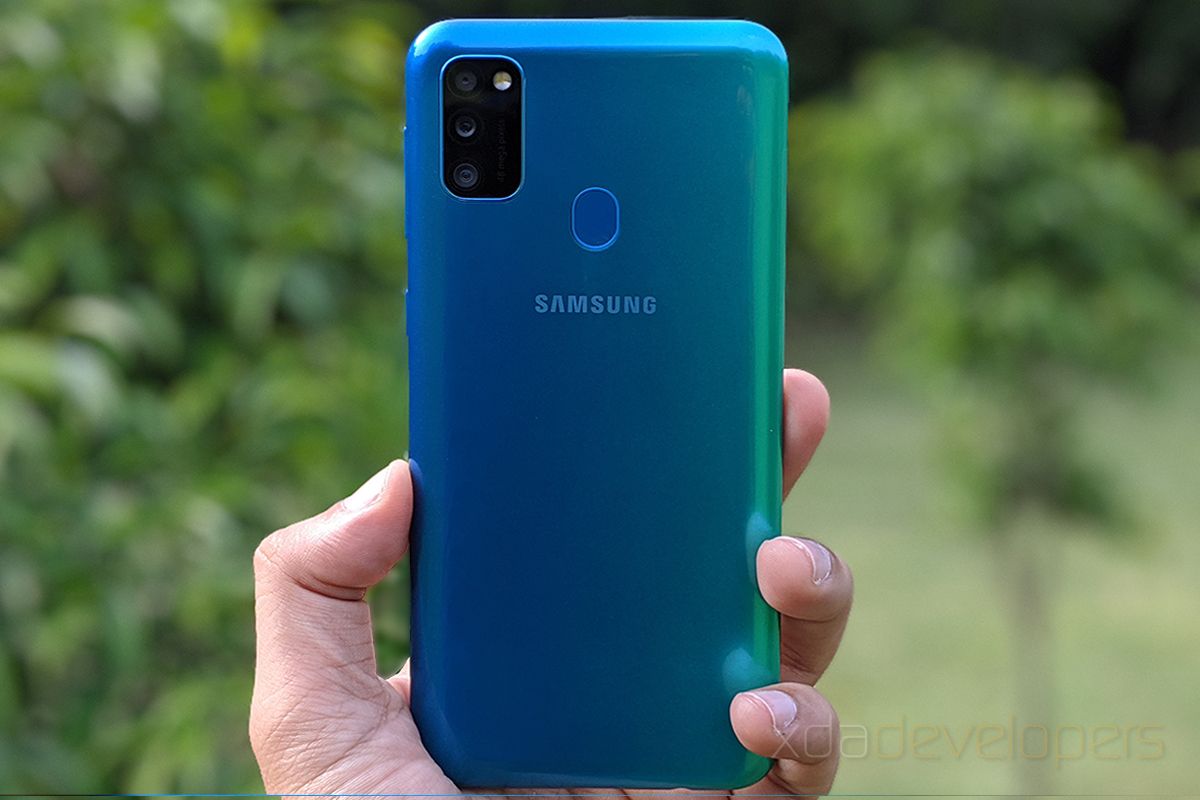
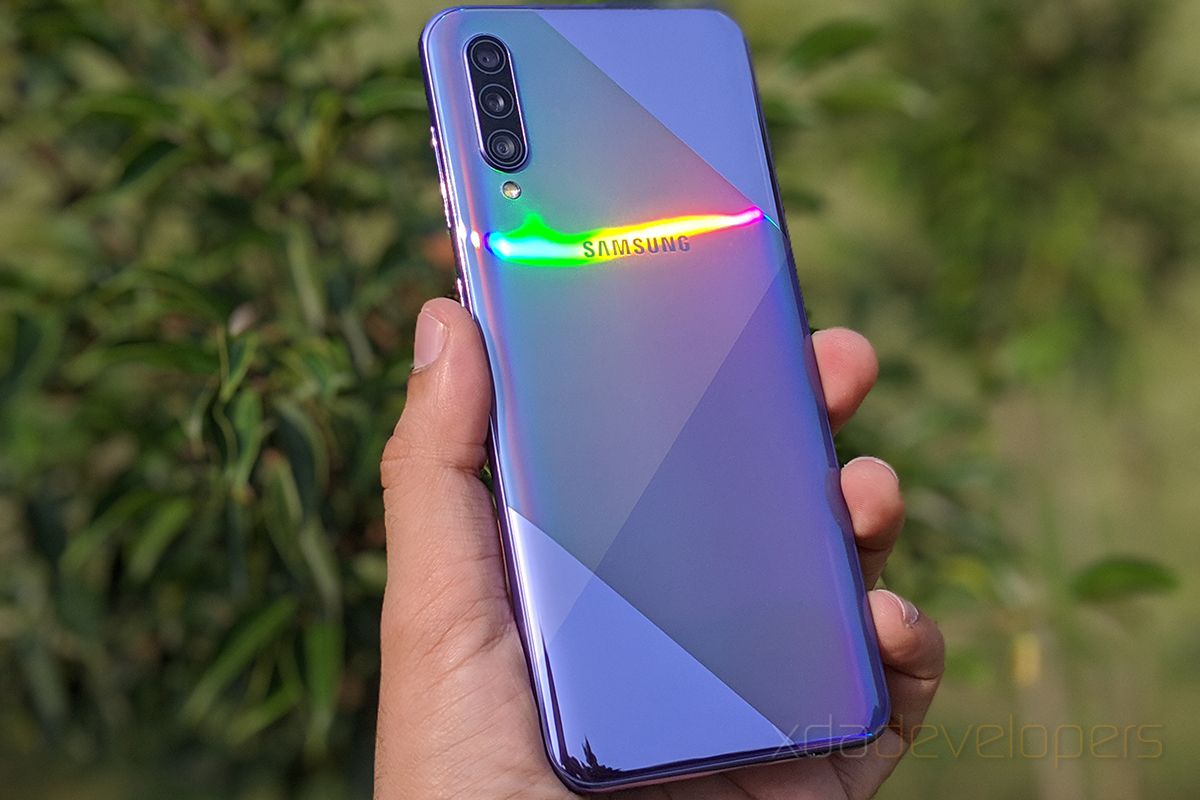
In spite of a glasstic layer sheathing the pattern on the back, the Galaxy A50s has a fairly slim footprint, which – along with the rounded back edges make the smartphone fairly convenient to hold. Bridging the gap between the front and back panel of the Galaxy A50s is a plastic frame that has a chrome coating. While one can see the chrome finish as a consolation for the lack of an actual metal frame, this surface does an excellent work of complementing the reflective back panel. The placement of the buttons, the USB-C port, the headphone jack, speaker griller, and the SIM slot are the same as the Galaxy M30s.

Both of the new Samsung devices come with triple rear cameras on the back but the Galaxy A50s has a thicker camera bump compared to the Galaxy M30s. This is because the overall thicker design of the Galaxy M30s allows it the space required to accommodate the entire camera module. The raised camera bump on the Galaxy A50s is starkly similar to the camera module on the Xiaomi Mi 9 and the three sensors in this module include a 5MP depth sensor, a 48MP primary camera, and an 8MP wide-angle camera (from top to bottom).

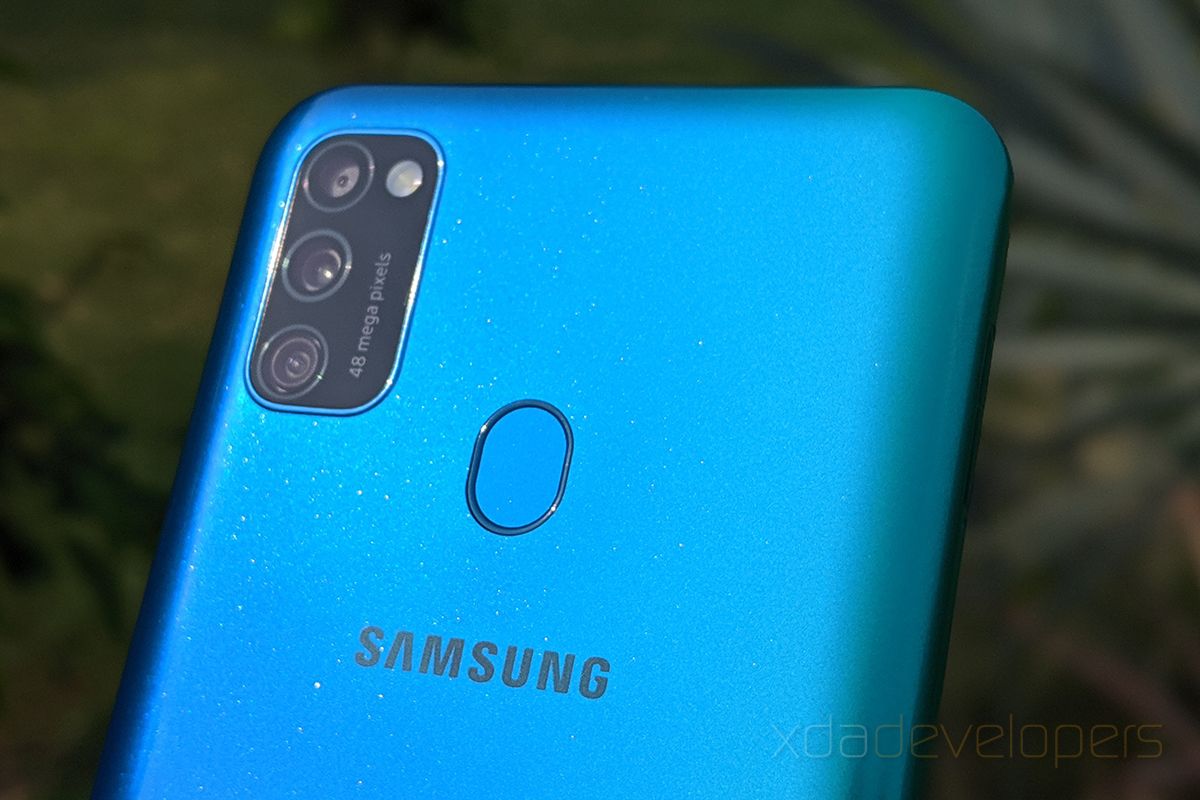
While the orientation in of the cameras is the same on the Galaxy M30s as well, the camera module is wider. Besides the three cameras, it features an LED flash towards the right of the depth sensor along with the text, "48 mega pixels" to advertise the resolution of the primary camera.
Another difference between the Samsung Galaxy A50s and the Galaxy M30s is in terms of their fingerprint sensors. The Galaxy M30 features a rear-mounted fingerprint scanner while the Galaxy A50s is armed with an optical fingerprint scanner under the display. While users' preference for a fingerprint scanner may vary with experience or their comfort in dabbling with newer formats of technology, the capacitive fingerprint scanner of the Galaxy M30s clearly outruns the under-display one on the Galaxy A50s in terms of the speed and performance. The fingerprint scanner on the Galaxy A50s is jarringly slow and often takes multiple attempts to unlock.
Keeping the fingerprint unlocking experience aside, the Samsung Galaxy A50s not only appears more premium than the Galaxy M30s but also built rather strongly. The sides on the Galaxy M30s produce a clicky sound when gripped firmly from the lower half of the smartphone and this evokes questions on the build quality. While the back panels on both of the devices are equally likely to get scratched – I've already managed to scuff the Galaxy M30s — Samsung has invested more thought and time into crafting the back of the Galaxy A50s compared to the Galaxy M30s and this is surely one of the grounds for the higher price.

The Galaxy A50s feels sleeker as well as more convenient to hold in comparison to the domed M30s. It, however, must be noted that despite feeling relatively easier to bend, the plastic shell on the Galaxy M30s is not necessarily fragile. Samsung's choice for the building material does feel outrageous because the designs are clearly not as exciting as phones from brands like Xiaomi or Realme. But if you're a Samsung aficionado, that's the best you get for this price. I would personally appreciate the all-metal design language as found on the Galaxy A6 from 2018 but the entire smartphone industry – not just Samsung – appears to be moving away from metallic phones and choosing dazzling rear panels made from glass or glistening plastic. This also leaves room for experimentation since the brands can replace the design under the plastic layer without having to change the shape or placement of the camera module.
Display: Full HD+ Infinity-U Super AMOLED displays on both
The Samsung Galaxy A50s and the Galaxy M30s share the same 6.4-inch Full HD+ Super AMOLED Infinity-U displays. Besides sharing the same resolution of 1080 x 2340 pixels, the displays on the two devices also have identical bezels and the chin, leading to an indistinguishable appearance from the front. The display panels on both of these smartphones have the characteristic yellow tint seen commonly on Samsung's AMOLED and Super AMOLED displays but if you prefer a neutral color tone, the display's colors can be customized by switching from the Standard to the Vivid mode in Display settings. The Settings also feature individual RGB sliders for fine-tuning the colors further.

Since both of the smartphones run Samsung's One UI based on Android 9 Pie, the settings under the Display menu are identical for the most part. The Galaxy A50s, however, gets an additional Edge Screen feature, which lights up the longer edges of the display when the phone is facing downwards and a new notification arrives. This is missing from the Galaxy M30s. Neither of the devices currently supports DC Dimming and we're not sure if it will get added to the devices with future updates. Additionally, both smartphones sport an Always On Display and besides a variety of clocks, you can choose from a variety of animated GIFs to be shown on the lock screen. Neither of the phones have a notification LED, but the Always On Display and other options do not let you miss the same.

Interestingly, despite having the same specifications on paper, the display on the Galaxy M30s is marginally brighter. I used the Lux Light Meter app (free version) on my Google Pixel 3 to measure the peak brightness of a completely white background (Hex code: #FFFFFF). Do note that since these values are measured using the Pixel 3's ambient light sensor and not an actual spectrophotometer, the absolute values may not be very reliable individually but the relative values can be used to draw a comparison. The display on the Galaxy M30s turns out to be brighter by ~3 to 5% in different sets of measurements.


The difference may be tiny but it becomes more evident when the Galaxy A50s and the Galaxy M30s are kept side-by-side. The marginally lower brightness on the display of the Galaxy A50s also leads to a minor reduction in the saturation of the colors. This, however, does not undermine the fact that both of these Super AMOLED displays are super vivid and bright and some of the best in their respective segments.
Camera: Sony IMX582 vs Samsung ISOCELL Bright GM2
The comparison between the Samsung Galaxy A50s and the Galaxy M30s takes an interesting turn in terms of the camera performance. Both of the smartphones come with triple rear cameras on the back and this setup consists of a 48MP primary sensor, an 8MP wide-angle sensor that captures a 123º wide view, and lastly, a 5MP depth sensor. Despite the same numbers externally, there's one major underlying difference. While the Galaxy A50s uses a Sony IMX582 sensor, the Galaxy M30s rocks a Samsung ISOCELL Bright GM2 sensor. The Samsung ISOCELL Bright G2 is an updated version of last year's ISOCELL Bright GM1 and it supports Dual Conversion Gain (DCG) for improved perception of varying light as well as Super Phase Detection as an improved version of PDAF.
In theory, both – the Sony IMX582 and the Samsung ISOCELL Bright GM2 – 48MP sensors are identical. Both of these are 1/2″ CMOS sensors with each pixel edge measuring at 0.8μm. Both sensors support 4-in-1 pixel binning, which effectively results in 12MP images made up of pixels measuring 1.6μm. The larger effective pixels allow crisper and brighter images, even under low light. Despite similar specs, we see a pattern in terms of the clarity and the color reproduction of the images taken with the two devices. We have some images for comparison between the two devices to help you form your opinions and pick the one which suits you better.
Starting off with the performance of the primary cameras on the Samsung Galaxy A50s and the Galaxy M30s in the default mode i.e. 12MP, my first observation is that the Galaxy M30s images appear brighter in daylight in spite of the same f/2.0 aperture value. To the naked eye, both images appear on par with each other in terms of sharpness and detail and there is no noticeable washing out of objects including those at a far-off distance, nor any compromise in the visibility in either of the cases




Long-range shots with Samsung Galaxy A50s on the left and Galaxy M30s on the right
Digging into the EXIF data reveals that the Galaxy A50s images have a smaller exposure time, which makes them appear slightly darker. Anyhow, the decision of choosing an image over one with better contrast (or vice-versa) is yours but I personally prefer the ones snapped with the Galaxy M30s since it's easier to reduce exposure than to increase it while editing images.
Interestingly, the pattern reverses in terms of close-range images. Here, both devices have nearly the same shutter speed but the Galaxy A50s takes slightly brighter images with a slightly higher ISO value. While the difference between the ISO values is minor (15 steps in the first case, 12 and 24 in the second and the third), the images taken with the Galaxy M30s once again appear perceivably better because of better focus and sharpness. In terms of colors, however, the Galaxy A50s has more natural tones while those on the Galaxy M30s appear artificially boosted.






Curiously, the Galaxy M30s is much faster when it comes to focusing on objects in a close range whereas the Galaxy A50s often struggles and causes frustration.
12MP vs 48MP
Both of these smartphones are capable of taking 48MP images and here's the first comparison of 48MP images taken with the Galaxy A50s and the Galaxy M30s at close range.


In both of these cases, the ISO and shutter speed values are same but once again, the Galaxy A50s lags behind the Galaxy M30s in terms of focus. The former focuses on the leaves beneath the pink flower, sabotaging the desired results.
Comparing 12MP and 48MP shots of similar objects taken with these two devices side-by-side gives us a better opportunity of making a decision. Here are two such instances in which the images on the top row are in 12MP resolution while those in the bottom row are clicked in full 48MP mode.

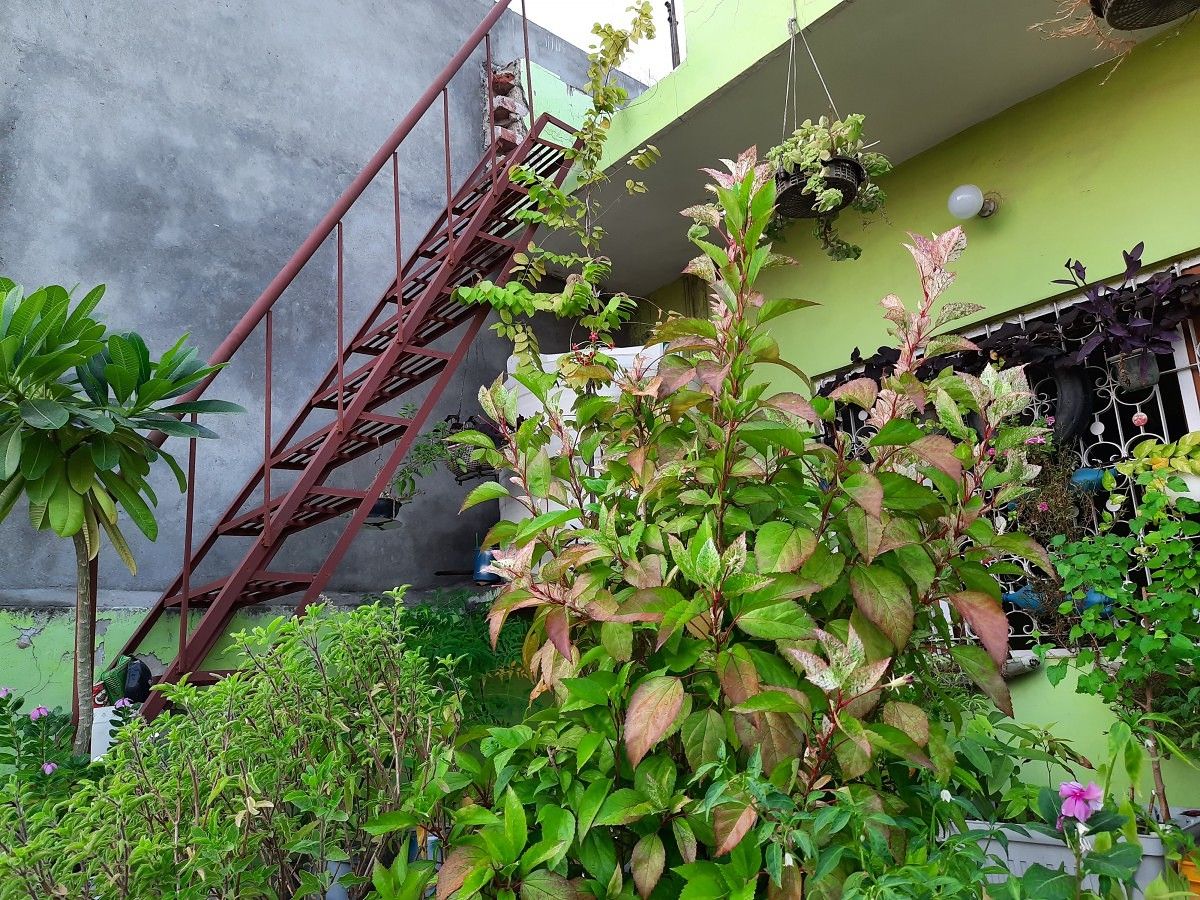
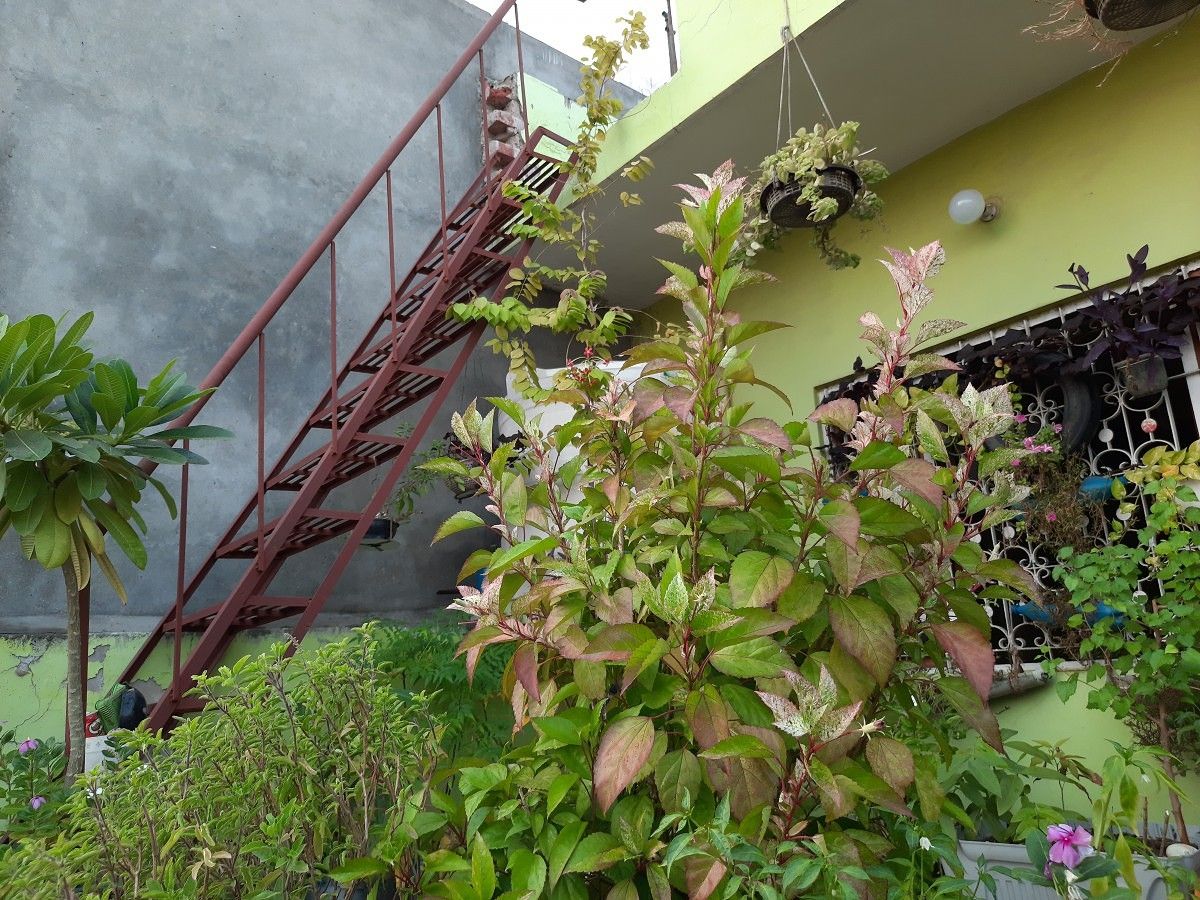

In the first case above, the Galaxy A50s continues to have warmer and seemingly more natural tones in the 12MP shots compared to the Galaxy M30s while the potpourri of vibrant colors gives the Galaxy M30s images a slightly HDR-ish look. Both cameras have a similar amount of sharpness and details but the Galaxy M30s once again has lower ISO values, meaning slightly lesser susceptibility to noise.
Here's another example of the comparison:

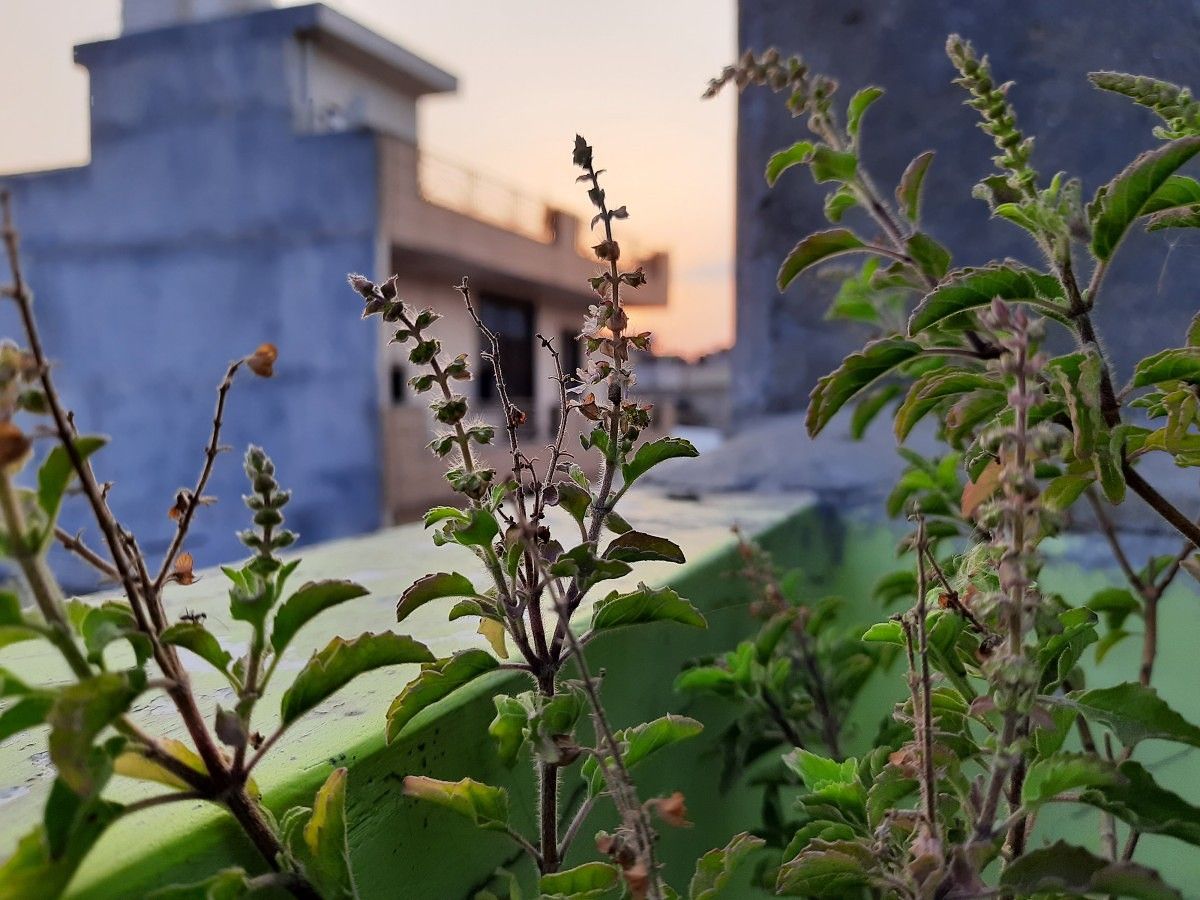


In this shot, too, the Galaxy M30s has a slightly lower ISO value in 12MP images, tendering this shot a better silhouette effect (admittedly, the orientation of the plant with the sun also makes a difference). The sky in Galaxy M30's 12MP image appears slightly more reddish while the greens are more saturated than on the A50s.
The colors in the two different resolutions are noticeably off on the Galaxy A50s with the 48MP shot appearing relatively whiter. Meanwhile, the colors remain consistent on the Galaxy M30s in both resolutions. There's no trend which I see in EXIF data and this is most likely because of the software processing on the two smartphones. In terms of details, both of the phones are similar with neither showing any exceptional results with 48MP images. If I have to bet my money based on only the 48MP images, I would say the images Galaxy A50s are lesser likely to pick up noise when in the process of adjusting exposure and correcting colors while editing.
Ultra-wide Angle
Moving on to the other useful sensor, both the Galaxy A50s and the M30s are equipped with the 8MP wide-angle cameras that are capable of clicking 123º wide images. The lens setup is identical too with an f/2.2 aperture value so I expect that the only differences between the results (apart from errors in maintaining the exact same frame) will be due to the tuning of the cameras on the two smartphones; let's see how they fare. The images in the top row are those taken in the standard 12MP resolution while the bottom row has images taken using the wide-angle camera.




Besides seeing similar trends in the 12MP images as the previous comparison, I see that the wide-angle images captured with the Galaxy A50s are evidently more saturated than the ones taken with the Galaxy M30s. Neither of the images are particularly sharp when zoomed into, so you might be limited to using them mostly on social media.
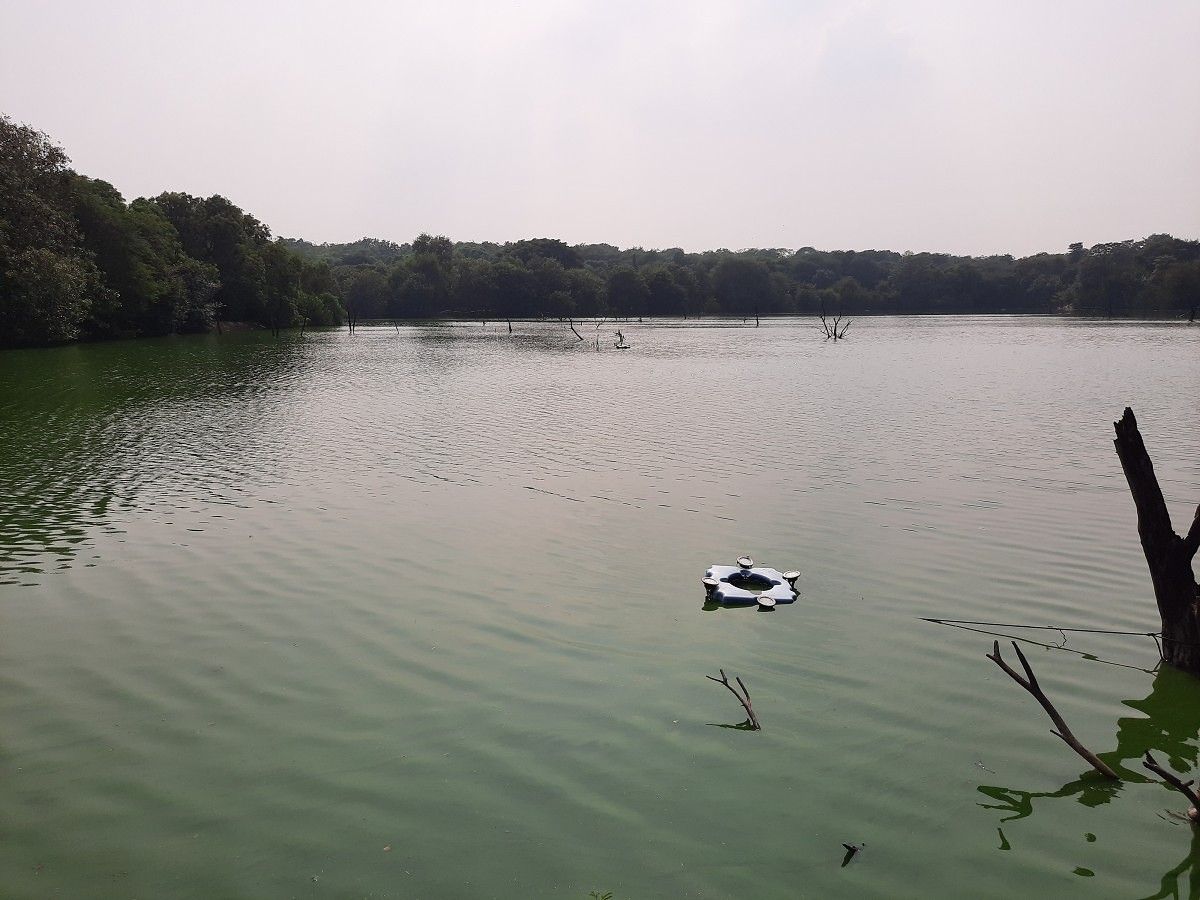

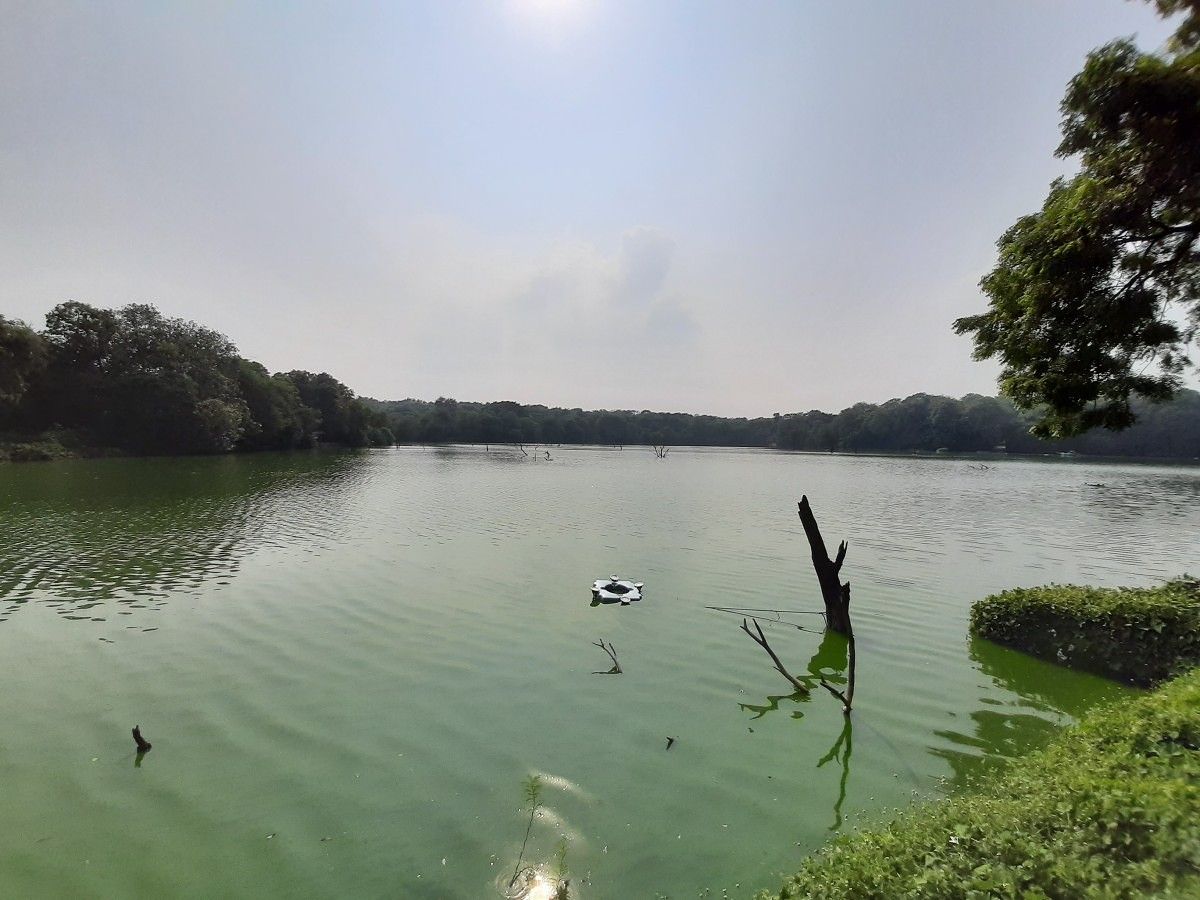

In the second set of examples, parts of the images, like that branch with leaves in the top right corner and the bush in the bottom right corner, are only slightly brighter in case of the Galaxy A50s without any major difference in the shutter speed or ISO values. We can't really choose a winner in this case since it will depend on your personal preferences.
Night Mode
One of the key reasons 48MP sensors are gaining prominence is that the pixel-binning to form a quad Bayer color filter with four pixels of the same color combined as one. This results in improved lighting and hopefully better details for images taken in low light conditions. To utilize this, both Samsung Galaxy A50s and Galaxy M30s come with a dedicated Night mode in which the smartphones capture a burst of images at different ISO levels and these different shots are stacked on top of each other.
Here are a couple of comparisons between the two phones without and with using the Night mode. The images in the top row are taken in the default camera mode while those in the bottom row are taken using the Night mode.




Straight up, the Galaxy A50s takes a visible lead here in the same lighting conditions, producing a much brighter image. In terms of the images captured with the Night Mode on, the Galaxy A50s captures much more light than the Galaxy M30s at the same shutter speed and ISO values. Unfortunately, the image that the Galaxy A50s captures appears bleached out due to the Night mode while that using the Galaxy M30s, although not as sharp, has more convincing colors. Neither of the results is spectacular as we can see a lot of color noise and graininess.
Taking another set of Night mode shots into consideration but with much less light, here are the results.




In this case, the Night mode produces a sharper image on the Galaxy A50s than the Galaxy M30s. This image was taken using a red light source and this color is more accurately captured on the Galaxy M30s compared to the Galaxy A50s which captures the light as orange.
Selfies
The disparity between the camera sensors continues on to the front with the Galaxy A50s featuring a 32MP selfie camera whereas the Galaxy M30s comes with a 16MP sensor. The sensor on the Galaxy A50s is a Sony IMX616 and it supports 4-in-1 pixel binning, resulting in 8MP images. However, there's no option to click images in 32MP resolution. We've seen this sensor before on recent devices including the Honor 20. On the other hand, we see a 16MP Samsung S5K3P8SP sensor on the Galaxy M30s. The sensor has been seen previously on devices like the Xiaomi Redmi S2/Y2.
Here are a few side-by-side comparisons of the selfies taken with the Galaxy M30s and the Galaxy A50s. Besides taking standard selfies, both of the phones can also capture wide-angle selfies with an 80º field of view. In reality, this 80º FOV is the actual view that can be accommodated by the sensor whereas the "standard" 68º FOV (as shown in the upper row among the set of mages below) is a cropped out version of the former. Samsung started adding the FOV switch to devices earlier this year and a couple of phones that received the feature with a software update include the Galaxy A50 and the Galaxy Note 9.
Quite evidently, the Galaxy A50s is much better at taking selfies than the Galaxy M30s. There are a whole lot more details in the selfies taken with the Galaxy A50s, in both – the standard and narrow-angle selfies. In addition to better details, the Galaxy A50s also blurs the background slightly to give it a pseudo-autofocus impression, even though the lens has fixed focus. The colors in the selfies taken with the Galaxy A50s are warmer and that is probably due to the pixel-binning effect.




The selfies taken with the Galaxy M30s appear to be artificially saturated and there's no fake blur here. However, you do get Live Blur option in both the cases and not only can you see the amount of blurring in the portrait mode shots in the viewfinder, but you can also adjust the strength of the blur later in the Gallery app.


While the edge detection in both cases is quite similar, the selfies from the Galaxy A50s are much more detailed and have truer tones while the skin in the selfies taken with the Galaxy M30s appear synthetically smoothened.
Lastly, I used the selfie flash to click images in pitch dark conditions and in this case too, the Galaxy A50s clearly does a better job in terms of preserving the details in the images. However, due to Pixel binning, the color of the shirt I'm wearing appears much darker and is actually closer to the original in the selfies I took with the Galaxy M30s. Nonetheless, I would prefer selfies clicked by the Galaxy A50s for the higher details they have.




You can take a look at all the images in full resolution in these albums:
Videos
In terms of video, both the devices support up to 4K recording at a maximum of 30fps using the rear camera. The two also get EIS support but only when the video is being recorded in Full HD. While this is acceptable for the Galaxy M30s, the same doesn't apply for the much more expensive Galaxy A50s, especially since devices in its range – such as the Redmi K20 – have EIS while shooting videos at 4K too. The Galaxy M30s features video recording using the wide-angle sensor but this is limited to Full HD whereas this option is missing from the Galaxy A50s – the Galaxy M30s takes another lead against the A50s.
Both devices have Slo-Mo and Super Slo-Mo video modes which can be engaged to slow down videos to 240fps and 480fps, respectively. Unfortunately, there's no option to set the speed of the video in either of the modes. In addition to that, the super slo-mo mode only captures videos for a single second and is then slowed down to 1/6th of the speed, down to 480fps.
Other camera features common to both the smartphones include Hyperlapse, a dedicated Food mode, and a Panorama feature. Hyperlapse is a fancy moniker for timelapse and allows for speeding videos up to various levels between 4x and 32x. The Food mode lets you capture images of food items with a circular lens blur effect. Lastly, the Panorama mode lets you capture wide landscapes using the standard as well as the ultra-wide sensor if you want a wider view vertically.
In terms of the video quality, the Galaxy A50s and the Galaxy M30s have comparable results but in similar scenarios, the A50s takes has a smoother transition from one point of focus to another in between the video. In its response, the Galaxy M30s retaliates with truer colors compared to the slightly greenish tint of the video captured by the Galaxy A50s.
Performance: Pretty much the same weave
One of the reasons I have been fascinated with this comparison is that in spite of the difference in their target segments and the pricing, Samsung has employed similar internal hardware on the Galaxy M30s as well as the Galaxy A50s. Both of these devices draw power from a Samsung Exynos 9611 chipset. This chipset is a notch above the Exynos 9610 and uses the same architecture but with higher CPU frequencies. Based on a 10nm process, the Exynos 9611 comprises 4x ARM Cortex A73 high-performance cores with a clock speed of 2.31GHz (compared to 2.30GHz on the Exynos 9610) alongside 4x ARM Cortex A53 high-efficiency cores with a frequency of 1.74GHz (against 1.70GHz on the Exynos 9610). It uses the same Mali G72 MP3 GPU as earlier.
The Exynos 9610 lies between the Snapdragon 660 and the Snapdragon 675, based on synthetic benchmark scores. The Exynos 9611 isn't a major jump from the Galaxy 9611 and also remains in the same bracket. Obeying the custom, we ran some standard and well-known benchmark tests to compare the performance of the two Samsung devices. We also include some comparable devices such as the Redmi Note 7 Pro and the Realme 5 Pro, which come with Snapdragon 675 and Snapdragon 712, respectively, to compare their performance with the Exynos 9611.

Starting off with GeekBench 5, the newly upgraded version of the popular benchmarking tool, we see nearly the same results on the Galaxy A50s as the Galaxy M30s. The multi-core score is slightly lower on the Galaxy A50s. Geenbench 5 focusses more on AI-related tasks but since it was launched only last month, we don't have scores from many devices to compare these with.
Since we don't have Geekbench 5 results on the other two devices, we chose to use Geekbench 4 as a substitute to compare the CPU performance. The Exynos 9611 does slightly better than the Snapdragon 712 (which, as we saw in our Realme 5 Pro review, is better than than the Snapdragon 710) but lags behind the Snapdragon 675 in terms of single-core evaluation. When it comes to multi-core scores, the Exynos 9611 lags behind the Snapdragon 712 as well as the Snapdragon 675.

To dissect this, the Snapdragon 712 comes with 2x Kyro 360 Gold cores with 2.3GHz frequency and based on ARM Cortex A75 along with 6x Kryo 360 Silver cores with 1.7GHz clock speed and ARM Cortex A55-based foundation. This architecture is relatively newer than the Cortext A73 and A53 cores used on the Exynos 9611. At the same time, the Snapdragon 675 uses much newer Kryo 460 cores, which is based on a combination of ARM Cortex A76 and Cortex A55 chips.
In terms of their abilities to perform day-to-day tasks like web browsing, video and photo editing, reading and editing PDF documents, and lastly, manipulating data in Excel sheets, the Samsung Galaxy A50s and the Galaxy A30s continues to tarry behind the other two devices due to their relatively weaker processor.

In terms of the graphics-intensive benchmark – 3DMark, the Mali G72 GPU on the Samsung Galaxy A50s and the M30s does better than Adreno 616 GPU as part of the Redmi Note 7 Pro's Snapdragon 675 mobile platform. In contrast, the points scored by the Adreno 616 on the Realme 5 Pro's Snapdragon 712 outnumbers all of these devices.

Lastly, when it comes to testing the performance of the storage, the Galaxy A50s and the Galaxy M30s outshine the other two competitors. Both of the smartphones use UFS 2.1 storage. The Redmi Note 7 Pro uses an eMMC storage which is why it has lower read sequential speeds compared to the devices. Meanwhile, the results on the Realme 5 Pro are more harmonious with the Samsung smartphones due to its UFS 2.1 storage.

Overall, we don't see much difference between the Galaxy A50s and the Galaxy M30s in terms of quantified performance analysis. If performance or gaming is your main priority, you might be better off with the Redmi Note 7 Pro or the newer Redmi Note 8 Pro. Likewise in the same range as the Galaxy A50s, you get options like the Redmi K20 with a more powerful Snapdragon 730G chipset.
Battery: Monstrous 6000mAh battery
The major highlight of the Galaxy M30s is its massive 6,000mAh battery, which is still one of the largest on smartphones. The Galaxy A50s lags behind with its smaller, 4,000mAh battery. Both of these devices get 15W fast charging via their USB Type-C port. Naturally, the hefty battery raises expectations about an enduring backup. Thankfully, both deliver.
During my usage of the Galaxy M30s, I've had to charge the phone only once in two days since the average battery backup exceeds 40 hours of moderate usage, including some intensive Call of Duty Mobile sessions, continuous VoLTE and Wi-Fi usage, along with nearly 9 hours of screen-on-time (SOT). When the display is continuously in use, the smartphone very easily lasts between 10-16 hours, depending on the use case. While I haven't had the tenacity to play games on the phone continuously for 10 hours, I played an online video loop test and the phone's battery dropped from 100% to 55% in 7 hours of continuous video playback at ~50% brightness and using a pair of USB-C headset for the audio. Extrapolating this data reveals that it can last almost 16 hours in this test if you wish to extract the last drop of battery juice out of it.
In contrast, the Galaxy A50s may not give you a two-day-long battery, but it can withstand an entire's day of usage including watching videos, playing games occasionally, and using the Always-On display all the time. In my usage of the smartphone, I got around 5+ hours of SOT and easily more than 24 hours of usage. To put the usage of both the devices in context, I ran PCMark's Battery test, in which the Work 2.0 benchmark runs in a loop when the battery capacity is between 80% and 20%. The screenshots below depict how both of these phones scored on the benchmark.


When it comes to charging, the Galaxy M30s takes nearly 2 hours and 15 minutes to go from 10% to 90% and another 30 minutes to get to full battery capacity. Like all phones, we see a drop in the charging rate after 90% to prevent the battery from overheating. The Galaxy A50s takes much less time comparatively, going from 10% to 90% battery capacity in 1 hour 40 minutes and from 90% to 100% in 20 more minutes. While the almost three hours that the Galaxy M30s takes to charge is a significant time, it spares you from the anxiety of using your phone conservatively even when the battery is at 10%. This is ideal for young users, especially those who are still in college or university as well as those who spend a lot of time traveling or in a field job.
Samsung Galaxy M30s vs Samsung Galaxy A50s: Which one offers more value for money?
The Samsung Galaxy M30s and the Galaxy A50s appear to be very similar on the specs sheet. But nuances like the little difference in their displays, the placements of their fingerprint scanners, the better selfie camera but the smaller battery on Galaxy A50s set the two apart. The much more premium design on the Galaxy A50s makes the distinction clearer, also throwing light on their intended target groups. The Galaxy M30s is for those who want the best bang out of their buck but can compromise in terms of performance. The Galaxy A50s, in contrast, is for those who trust the Samsung brand name over others like Xiaomi's Redmi, want a shiny and attention-grabbing phone, as well as the best selfies in the segment.
So the question remains, which one offers greater value for money? The answer is – it depends on your perspective and preferences. If you value form over function, the Galaxy A50s is a great phone but only if you want to remain loyal to Samsung. Meanwhile, if function is worth more than form in your opinion, the Galaxy M30s is an excellent phone. The latter's 6000mAh battery, itself, can be a compelling reason for the majority of those who wish to buy it.
Looking back at Samsung's philosophy behind the Galaxy M series, which was announced simply to gain back part of the userbase lost to Xiaomi, the Galaxy M30s does complete justice to it. It can be seen as a lucrative alternative to the Redmi Note 7 Pro or the Realme XT if you want a large battery. While the Galaxy M30s may be limited to certain price-sensitive markets including India initially, the Galaxy A50s will be available in most of Samsung's markets. For now, both of these devices are officially available only in India but you may find third-party sellers who may charge some extra amount over the official price.
Buy Samsung Galaxy M30s for ₹13,999 on Amazon India || $335 on eBay
Buy Samsung Galaxy A50s for ₹20,999 on Amazon India
Which one will you choose? Let us know in the comments section below.
The post Samsung Galaxy M30s vs Galaxy A50s: Would you choose looks over value for money? appeared first on xda-developers.



No comments:
Post a Comment